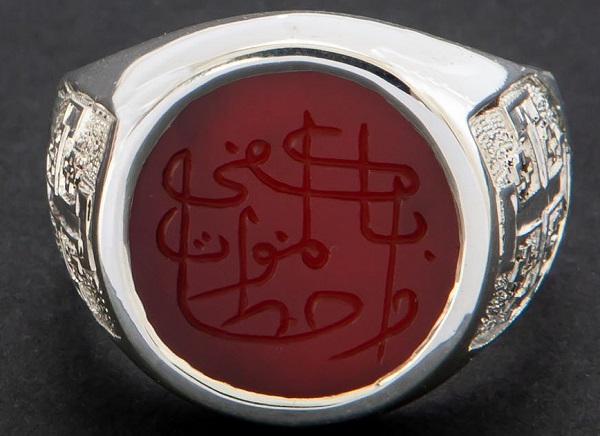FWP:
On seals and signet-rings, see {61,5}.
This verse offers an enjoyably clever deployment of the legal imagery of trust, safeguarding, labelling, witnessing. The speaker himself is the bank vault in which the cruelty of the movements of the beloved's eyelashes is preserved. How? Because the cruelly irresistible movements of her eyelashes have worked like engraving tools, engraving her name into every single drop of his blood the way one would carve letters on a precious stone, a signet ring, or a personal seal. And further to assure the speaker's reliability, the beloved is identified as a shāhid , which is also a legal term for a 'witness'; for more on this term, see {98,6}. Since the lover holds in trust countless blood-drops that are indelibly marked as belonging to someone else, his behavior is controlled by that legal obligation: his life is emphatically not his own.
The piercing power of the eyelashes is a ghazal commonplace. The beloved's eyelashes sometimes pierce the blood-drops completely through, to make a set of coral prayer-beads, as in {10,2}; this is an aspect of their identification as tiny spears or arrows. They can also pierce liver-fragments and thus 'dine' on them (as on kabobs?) with relish, as in {233,2}.
Bekhud Mohani and Arshi are right to point to {16,1}
for comparison, since it works with the same basic imagery: each drop of blood
as individually, accountably, held in trust for the beloved's eyelashes. Yet
the present verse goes beyond it, and performs an elegant twist of its own:
here, the delicate up-and-down movements of the fluttering eyelashes don't
pierce, but engrave. A whole new domain of metaphor
is thus opened up for exploration.

Nazm:
That is, every drop of blood in my body is a jewel/signet on which the needles of the eyelashes have engraved the beloved's name, and I am a treasure-house of all those jewels/signets, for on every drop her seal has been made. (121-22)
== Nazm page 121; Nazm page 122